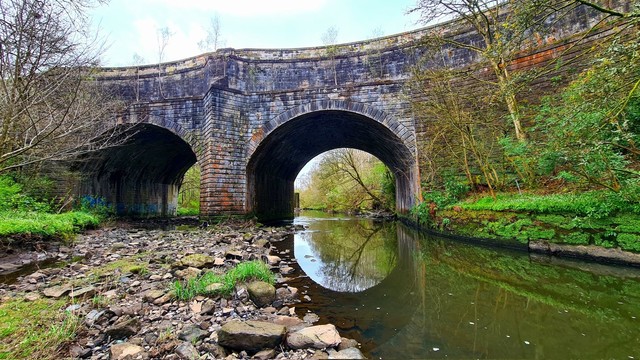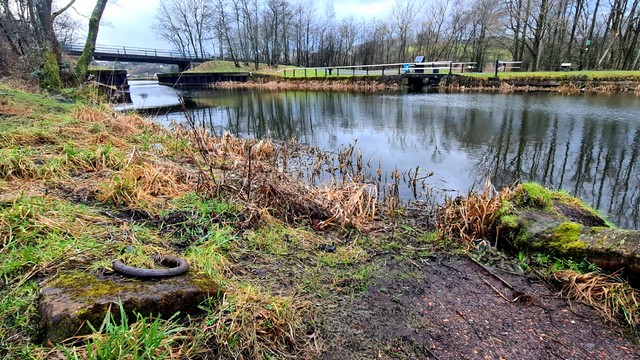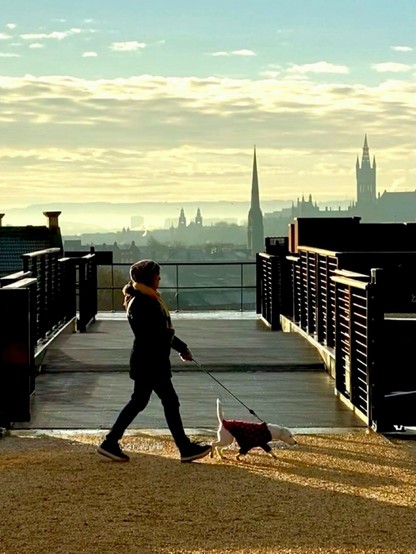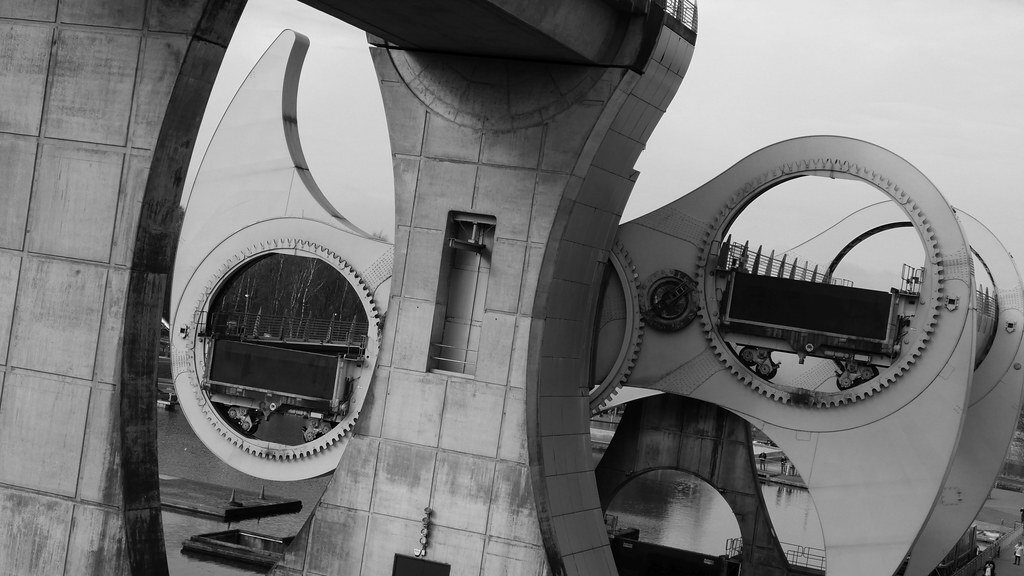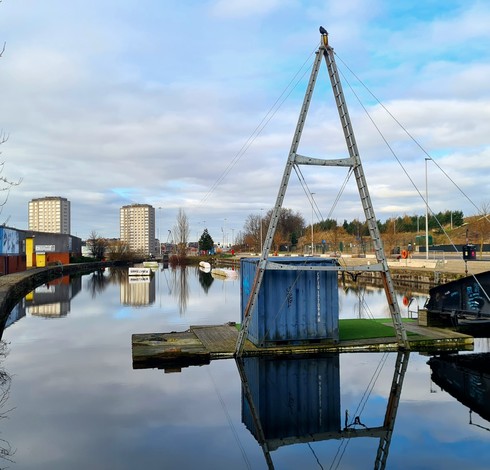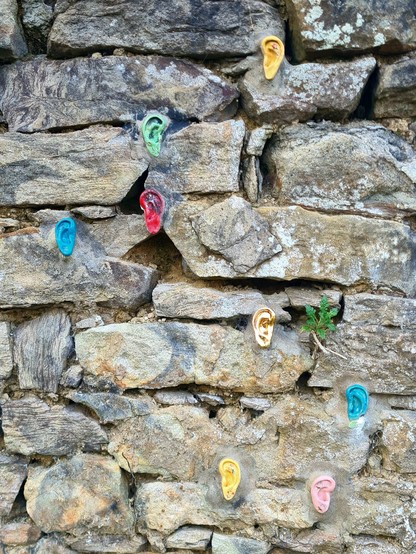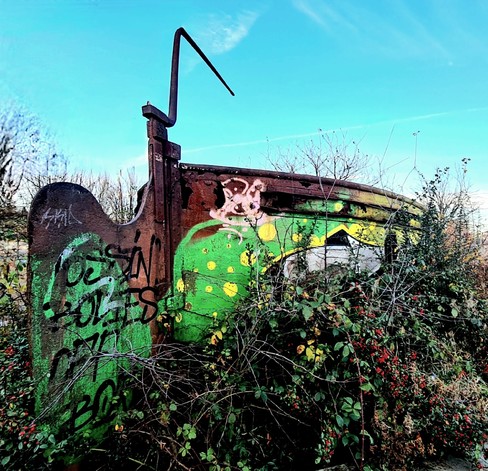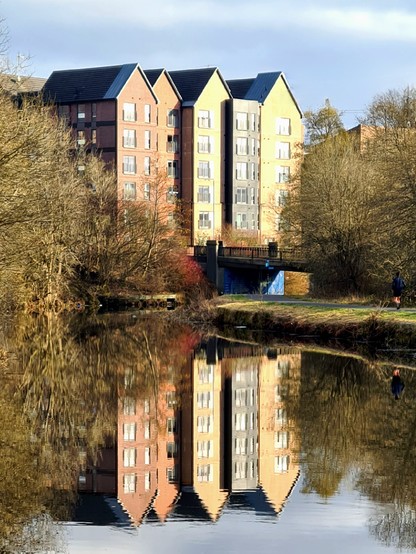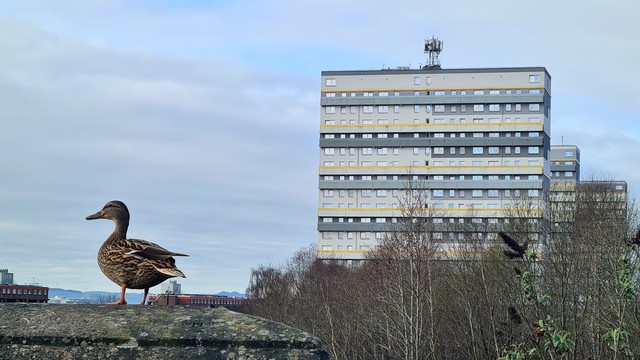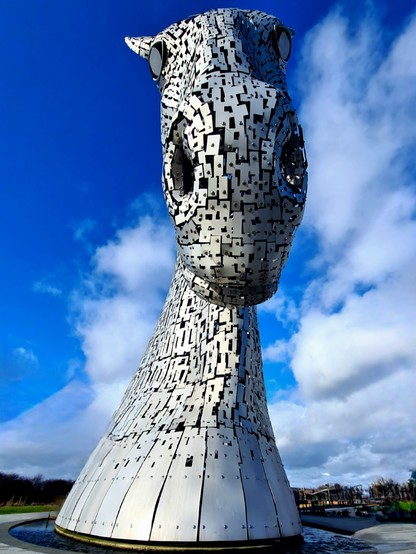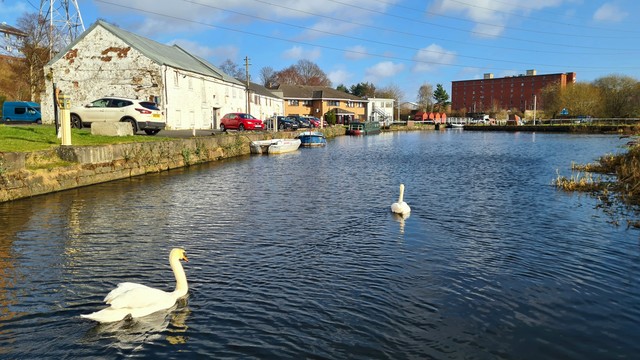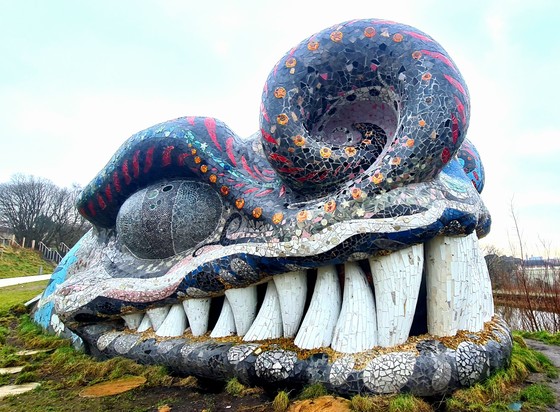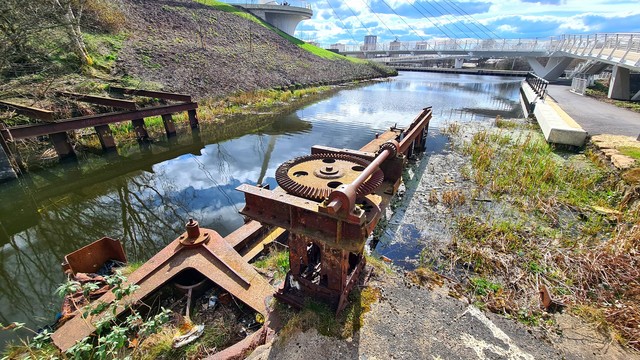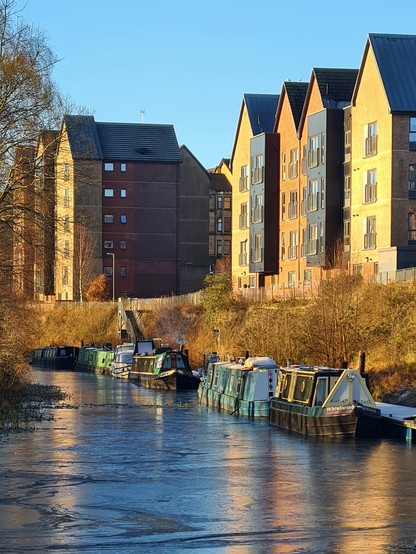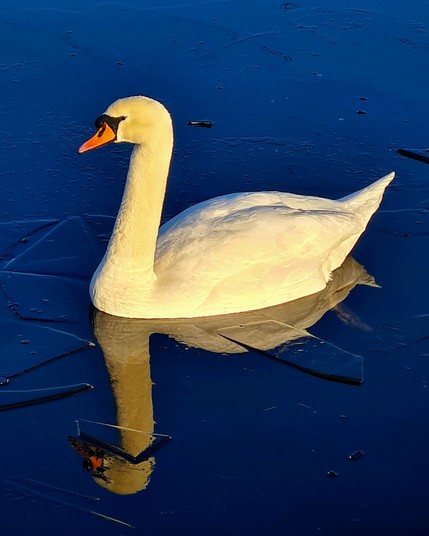The Kelvin Aqueduct in Maryhill. Opened in 1790, it carries the Forth and Clyde Canal over the River Kelvin. This canal was the world's first manmade sea-to-sea water way designed to provide a shortcut for shipping, making it the forerunner of the much larger Suez and Panama Canals.
Recent searches
Search options
#ForthAndClydeCanal
The former mooring point of the Queens of the Canals at the Craigmarloch Basin on the Forth and Clyde Canal, some 25km east of Glasgow. In 1893, a steamer by the name of the Fairy Queen started offering day trips along the canal between Port Dundas in Glasgow and Craigmarloch.
Cont./
Looking out over Glasgow from the Hamiltonhill Claypits Nature Reserve on the Forth and Clyde Canal. This was a photo I took last May, but never seem to have got round to posting.
The Falkirk Wheel and visitor centre (which always reminds me of a wedge of Gouda) https://www.flickr.com/photos/woolamaloo_gazette/54393683814/in/dateposted/
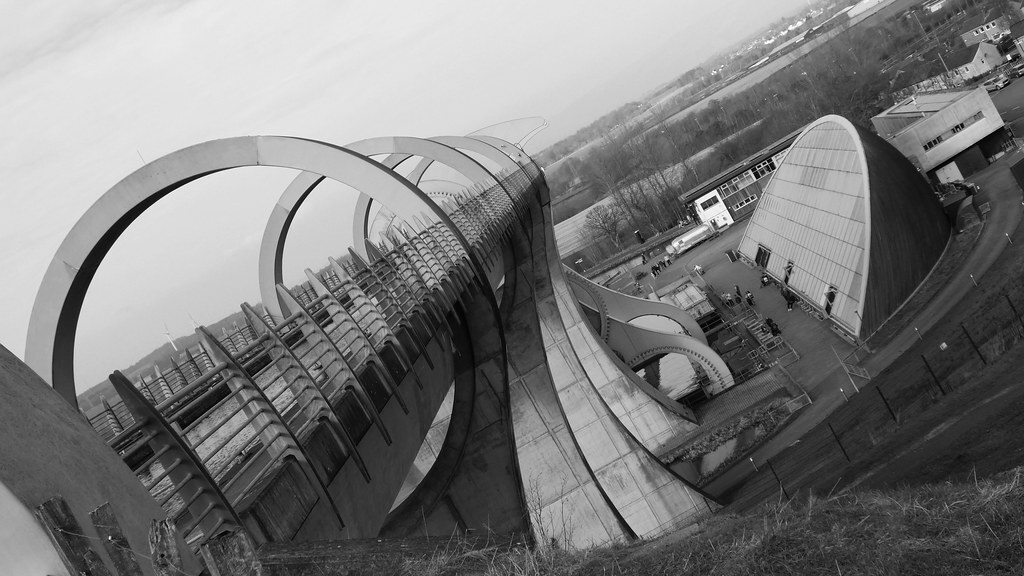
The Glasgow Wake Park in Port Dundas on the Glasgow arm Forth and Clyde Canal. Opened in 2015 as part of the Pinkston Watersports Centre, it's built in an area once dominated by chemical works, factories, foundries and the Pinkston Power Station, which was built in 1900 to supply electricity to Glasgow's extensive tram network when it was electrified in time for the 1901 International Exhibition in Kelvingrove Park.
Love this street art installation by the artist Louise McVey. It's up at the Applecross Basin in Glasgow alongside the towpath of the Forth and Clyde Canal.
The rusting hull of an old canal boat recovered from the bottom of the Port Dundas Basin on the Forth and Clyde Canal in the north of Glasgow and placed on a platform beside the canal.
Modern flats looking very pretty reflected in the Forth and Clyde Canal in Glasgow, and demonstrating that new housing developments don't have to be characterless, generic boxes.
It can be hard to find a different angle to capture well-photographed landmarks. This is my attempt at doing so for one of the Kelpies, a pair of 30 metre high sculptures which mark the eastern end of the Forth and Clyde Canal.
Today was a great day for indulging in a bit of gongoozling at the Applecross Basin on Forth and Clyde Canal in Glasgow. If you don't know already, gongoozling is the act of watching the activity on a canal, but without getting involved. It's thought to have originated from the Lincolnshire words Gawn and Gooze, both of which mean to stare, and one who gongoozles is a gongoozler.
The magnificent Bella the Beithir at Stockingfield Junction on the Forth and Clyde Canal in the north of Glasgow. Created by Nichol Wheatley, when finished Bella will be 121 metres long as her body weaves through the hill above the Stockingfield Bridge. Commissioned by Scottish Canals, it's a companion piece to the Kelpies in Falkirk.
The Springbank Cottage between Garscube Road and the Forth and Clyde Canal in Glasgow. There has been a pub in this site since the 1870s. When it was known as the Planet Bar in the 1960s, it was part of a row of traditional Glasgow buildings and formed the ground floor of a three-storey structure. It now stands alone and decaying, a shadow of its former self and the last survivor of its block.
The canal sits on a slope above most of the city, and if it were to be hit by a bomb and the bank breached, some 17 miles worth of water (the distance between adjacent locks at this point) would have caused devastation as it cascaded down onto the city below. As a result, a number of these water-tight safety gates were installed which could be closed, if needed, to prevent this happening.
The remains of World War II era safety gate on the Forth and Clyde Canal at Stockingfield Junction in the north of Glasgow.
Cont./
The original Vulcan was scrapped in 1873, by which time canals had been superseded by railways as the fastest way to transport large numbers of people over long distances, but this replica was built in 1987 by apprentices at a shipyard in Govan. It's now housed in the Summerlee Museum of Scottish Industrial Life in Coatbridge.
This is a replica of the Vulcan, the world's first all-iron hulled boat. It was designed to carry passengers to and from Glasgow along the Forth and Clyde Canal. Launched in 1819, it was pulled by two shire horses and could carry up to 200 people, and helped turn the canal in Scotland's first mass transit system.
Cont./
New flats overlooking the Firhill Basin in the north of Glasgow. Along with the narrow boats berthed below, their tall, gabled and colourful design give this stretch of the Forth and Clyde Canal a distinctly Dutch feel. I doubt this is the type of image which comes to mind when many people think of Glasgow.
Love this photo I took today of a swan on the frozen Forth and Clyde Canal at Firhill in Glasgow. Swans are large enough to break through the relatively thin ice, and you can see the broken shards floating around it, disrupting its reflection.


